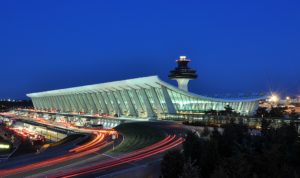
The Blue Ribbon Task Force (BRTF) is a joint effort between the largest drone advocacy group, the Association of Unmanned Vehicles and Systems International (AUVSI), and Airports Council International (ACI-NA). The goal of the report was to provide a framework for airports in North America to deal with drone integration and the issue of drones around airports, including counter drone technologies and a framework for counter drone policies.
Co-chaired by former FAA Administrator Michael Huerta and Los Angeles World Airports CEO Deborah Flint, the BRTF is comprised of stakeholders from airports, air traffic control, the FBI and controlled spaces like football stadiums. Other than being sponsored by AUVSI, the BRTF doesn’t seem to include representatives from the drone industry: which is clear in the first pages of the report, as it refers to “clueless, careless, and criminal” operators, an uncomfortable description for the commercial drone industry.
The report states clearly that airports should not be held solely responsible for protecting themselves from drone incursions – and that federal government isn’t doing it quickly enough. “The BRTF takes the position that airports should not be burdened with undertaking this operation alone. Instead, as with many other operations at airports, such as airport security, UAS detection should be a shared responsibility between airports and federal governments,” says the report.
Who’s in Charge?
The overwhelming sense of the report is that nobody really knows who is responsible for drone mitigation systems – and no agency currently has either the funding or the authority to take it on. The BRTF calls for the FAA to act and take on the leadership role, saying that implementing counter drone technology is simply too complex and too expensive for airports to deal with. “Without a robust federal role, an unacceptable security gap will continue to exist at many airports across the U.S. and Canada.”
The report says that Congress must act with urgency to fund the FAA “to engage in the lead role of monitoring UAS traffic in and around airports.” The BRTF also says that the agencies must establish counter UAS standards – and somehow, funding has to appear for airports to invest in them. Additionally, stresses the report, somebody needs to enforce the laws: and if the FAA can’t do it, local law enforcement will have to be trained.
Despite BRTF efforts to provide concrete solutions in the report; the lack of oversight, authority and funding to deal adequately with drone mitigation systems is evident. A callout on one of the report’s pages makes clear the frustration of the group: “It is no longer acceptable for a lack of legal framework, understanding of technology or authority to be the reasons that airports remain at risk of a serious UAS event.”

Miriam McNabb is the Editor-in-Chief of DRONELIFE and CEO of JobForDrones, a professional drone services marketplace, and a fascinated observer of the emerging drone industry and the regulatory environment for drones. Miriam has penned over 3,000 articles focused on the commercial drone space and is an international speaker and recognized figure in the industry. Miriam has a degree from the University of Chicago and over 20 years of experience in high tech sales and marketing for new technologies.
For drone industry consulting or writing, Email Miriam.
TWITTER:@spaldingbarker
Subscribe to DroneLife here.







[…] Supply hyperlink […]